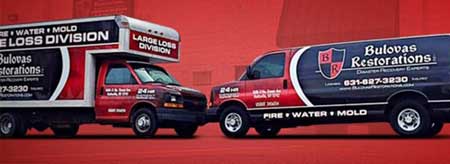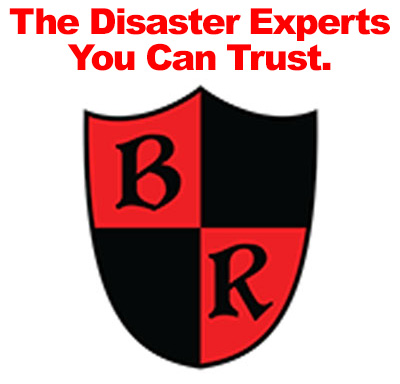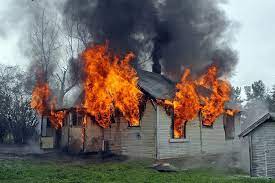-
Bulovas Restorations Inc.Fire Damage ServicesWater & Flood
Long Island
Fire & Smoke
Mold Removal
Call Now
#1 Fire and Smoke Damage Restoration Company In Long Island By Bulovas Restorations, Inc.

Fire Can Ruin Your Home In A Matter Of Minutes. The Longer The Smoke, Soot, Or Water Linger, The More Damage Occurs.
Call for Free Consultation:
(631) 358-5200
Fire Damage Cleanup And Removal In Long Island
Even with fire damage, there is a window of time where the smoke, soot, and water begin incrementally damaging your home, furniture, and other personal belongings. The longer you delay contacting emergency cleanup professionals, the worse the damage will become. So, after the fire has been put out, what is the next step? Well, it is to contact us.
We know how materials react to fire, smoke, soot, and water. More importantly, we know how to minimize the damage that has already been done, while repairing, preserving, and protecting your possessions.
If you have any questions,
please call (631) 358-5200 any time, day or night.
Experiencing Fire and Smoke Damage On Long Island? We Can Help!
When you’ve gone through an experience as traumatic as having a fire at your residence or place of business, you need the services of a Long Island fire damage restoration company to reduce your losses and recover as many of your belongings as possible. Bulovas Restorations’s fire damage and smoke removal services make full use of high-tech equipment and fine-tuned techniques that ensure your property, including walls, ceilings and belongings, is restored to as close to the original state as is feasible. In addition, Bulovas Restorations fire and smoke removal specialists will make every effort while restoring your property to minimize the chances of long-term damage caused by soot and ash dispersed within the air.
Call for Free Consultation:
(631) 358-5200
Is your restoration contractor concerned about the air quality in your home after a fire ? If not that's an immediate RED flag !
Fire damage extends far beyond the visible destruction of walls, ceilings, and furnishings. The aftermath of a fire leaves behind a range of airborne contaminants that can compromise indoor air quality and pose serious health risks. These harmful pollutants can linger undetected even after surface cleaning and structural restoration.
For cleaning and restoration professionals, air quality testing is essential to post-fire recovery. These invisible threats can persist without thorough testing, leading to long-term health issues and liability concerns.
The Hidden Dangers Lurking After Fire Damage
Once the flames are extinguished, many people assume the danger has passed. However, fire-damaged structures often contain residual pollutants that remain suspended in the air or embedded in porous materials such as drywall, carpets, and insulation. The presence of these contaminants can cause lingering odors, respiratory issues, and even long-term health complications.Soot and Fine Particulate Matter
Soot is one of the most pervasive byproducts of fire damage. These microscopic carbon particles can spread throughout a building, coating surfaces and infiltrating HVAC systems. Because soot particles are so small, they are easily inhaled, potentially leading to respiratory irritation, lung inflammation, and exacerbation of conditions such as asthma or chronic bronchitis.
The immediate respiratory effects of soot exposure are concerning, but prolonged exposure has also been linked to cardiovascular diseases and other serious health issues. Standard cleaning methods may remove visible soot, but only comprehensive air quality testing can determine whether airborne particles remain at unsafe levels.
Volatile Organic Compounds (VOCs)
During a fire, materials such as plastics, synthetic fabrics, and treated wood release VOCs — harmful gases contributing to indoor air pollution. These compounds include chemicals (for example, benzene, formaldehyde, and acrolein) that can cause dizziness, headaches, eye irritation, and, in some cases, long-term organ damage. VOCs do not just dissipate once the fire is out. They can linger in enclosed spaces, especially when ventilation is poor.
Toxic Residues From Burned Materials
Fires involving electronics, household cleaners, and building materials can introduce a range of toxic residues into the air. These include heavy metals like lead, mercury, dioxins, and furans—highly toxic compounds that form when plastics and other synthetic materials burn. Exposure to these substances, even at low levels, can contribute to neurological problems, immune system suppression, and increased cancer risks.
Restoration teams can pinpoint specific contaminants in a fire-damaged environment by conducting air quality tests. This data guides decision-making about whether further remediation is needed before a building is deemed safe for reoccupation.
Why Air Quality Testing Is a Critical Step in Fire Restoration
Air quality testing is not just an extra step; it is essential to fire damage restoration. These tests help restoration specialists assess contamination levels and provide clients with concrete proof that the air is safe to breathe following professional restoration cleaning services. This process involves several key steps:Verifying the Success of Restoration Efforts
Restoration professionals use a variety of cleaning techniques, including HEPA vacuuming, chemical neutralizers, and air filtration devices, to remove contaminants. However, without testing, it is impossible to confirm whether these methods have completely addressed airborne pollutants.
Air sampling and surface testing provide measurable data on particulate concentrations, VOC levels, and other hazardous compounds. If test results indicate that contaminant levels remain high, additional cleaning and filtration measures can be implemented to address the problem.
Protecting Occupant Health and Well-Being
After fire damage restoration, the health and safety of occupants are top priorities. Undetected airborne pollutants can cause persistent respiratory symptoms, headaches, and irritation, particularly in vulnerable individuals such as children, the elderly, and those with preexisting conditions.
Full-scale air quality testing helps identify lingering hazards so that appropriate measures can be taken to eliminate them. This step is notably crucial in healthcare facilities, schools, and residential properties where indoor air quality directly impacts the well-being of occupants.
Preventing Liability Issues and Future Claims
When fire restoration is completed, property owners and insurers expect clear documentation that the space is safe for reentry. Restoration professionals may face liability concerns without air quality testing if occupants later experience health problems linked to residual contaminants.
Providing air quality reports as part of the post-restoration process demonstrates a commitment to thorough remediation. It also assures clients that their property has been adequately restored, helping build trust and credibility within the restoration industry.
Key Methods for Post-Fire Air Quality Testing
Various air testing methods can be used to assess contamination levels in a fire-damaged property. Depending on the extent of the damage and the materials burned, restoration professionals may use a combination of the following techniques:
Air Sampling for Particulate Matter: High-efficiency air sampling devices measure the concentration of fine particulate matter (PM2.5 and PM10) in the air. Elevated levels indicate the presence of soot and smoke residue that may require additional air purification efforts.
Best Practices for Improving Indoor Air Quality After Fire Damage
Once testing identifies contamination levels, restoration professionals can implement targeted strategies to improve air quality and reduce health risks. Some best practices include:
Setting a New Standard in Fire Damage Restoration
Air quality testing is not just an extra step in restoring fire damage; it is necessary. Regulatory compliance is essential, but the absolute priority is protecting the health and safety of those living or working in the restored space. Making air testing a standard practice reflects a commitment to quality, safety, and industry best practices.
By prioritizing this essential step, cleaning, and restoration professionals assure property owners that their space is not just repaired but genuinely safe to occupy.

Fire and Smoke Damage Restoration Long Island
Fire and smoke damage can have a severe impact on your home or business. Fire wreaks havoc on your respective facility and leaves countless necessary repairs in its wake. Bulovas Restorations Inc. is committed to immediate emergency response to fire damaged homes and businesses.
Our team is certified and trained in fire and smoke damage restoration and can capably handle any amount of damage you’ve experienced. Be sure to call us first to handle the job. We will communicate directly with your insurance company to enable the project to reach completion as smoothly as possible.


Long Island Fire and Smoke Damage Services
24 Hour Emergency Service
Emergency Board Up Service
Structural Restoration
Smoke Damage Clean Up
Contents Pack Out & Cleaning
If you have suffered from any kind of fire damage, please contact our office at (631) 358-5200. We proudly respond to any emergency disaster restoration for any of our Long Island suburbs. Our Institute of Inspection Cleaning and Restoration certified recovery professionals have the experience and compassion to fully restore Long Island homes and businesses.

Bulovas Restorations
Click To Call: 631-358-5200
Click To Call: 631-358-5200
 PLEASE SUBSCRIBE TO OUR NEWSLETTER
PLEASE SUBSCRIBE TO OUR NEWSLETTER
Stay informed about our projects and specials.

100% SATISFACTION
GUARANTEED

FRIENDLY
TECHNICIANS

locally owned
and operated

24/7
support

contact us
-
Bulovas Restorations Inc.
85-7 Air Park Drive
Ronkonkoma, NY 11779

CALL THE EXPERTS

